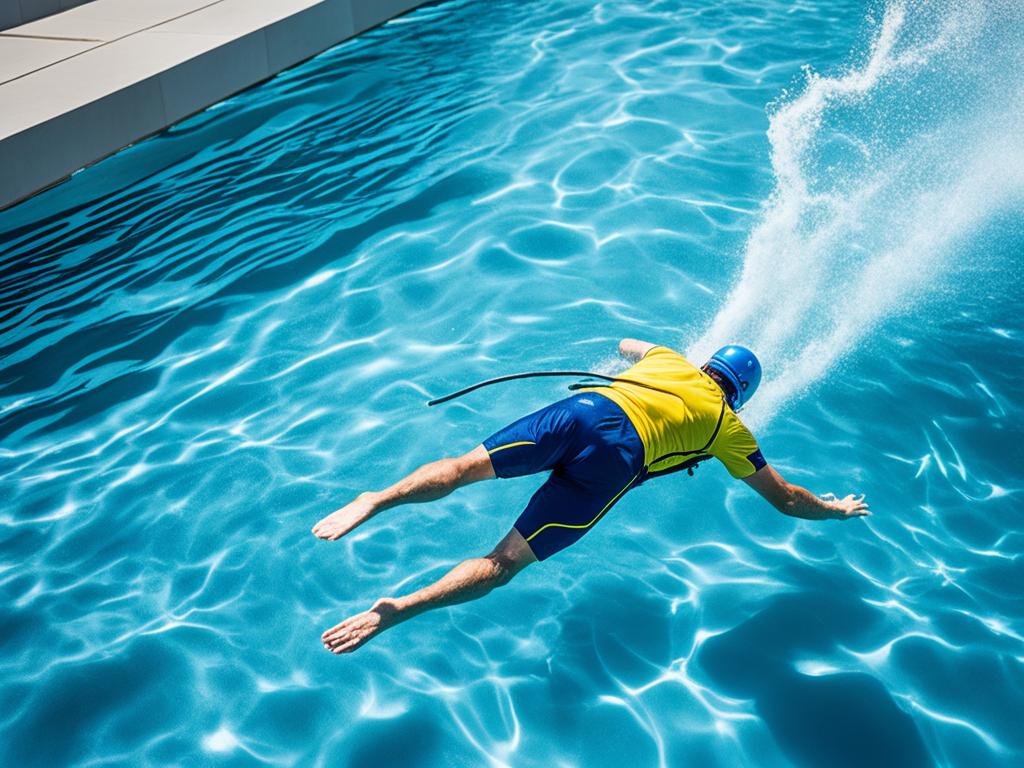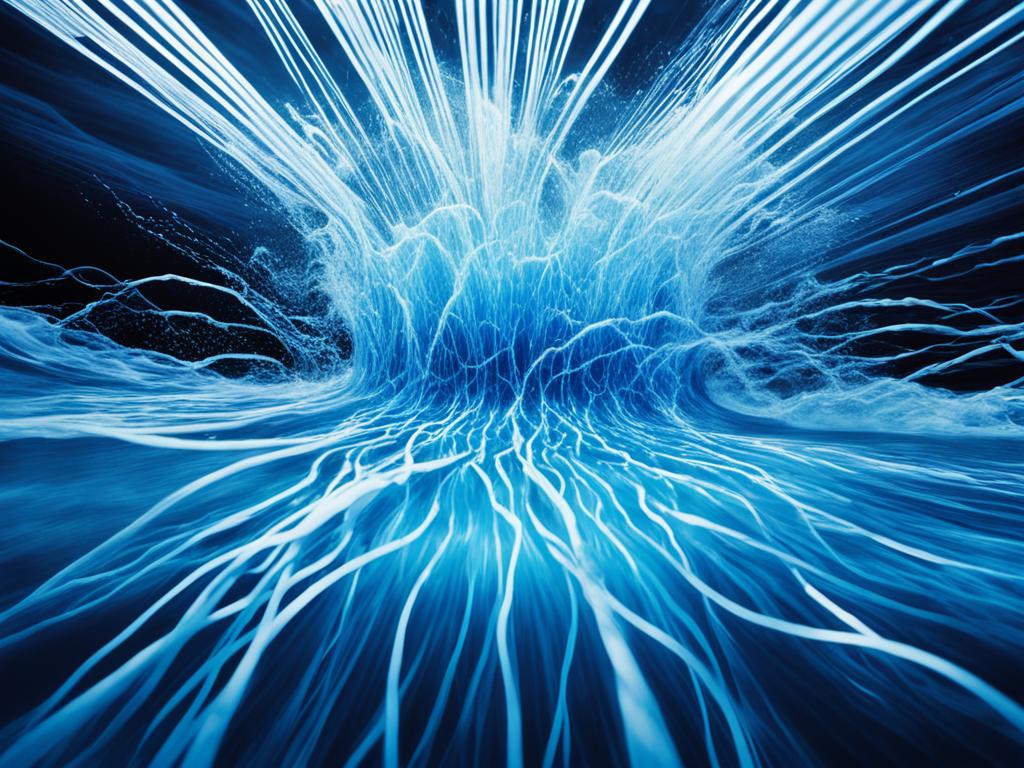When considering the relationship between water and electricity, many people are often left wondering just how far does electricity travel in water. To answer this, I’ll explore the fascinating topic of the electrical conductivity of water. Surprisingly, pure water is actually quite a poor conductor of electricity, as it lacks the charged particles necessary for efficient conductivity. However, everyday water—which typically contains various impurities or contaminants—can significantly influence how far electricity travels, making it a better conductor.
This understanding is crucial not only for scientific inquiry but also for practical applications, especially concerning electrical safety in water. The use of underwater cables for electricity transmission, for instance, highlights the potential risks involved if electrical faults occur. As I delve deeper into this subject throughout the article, we will uncover the impact of various factors on electrical conductivity in water and the implications this has on our safety and technology.
Table of Contents
Key Takeaways
- Electricity travels differently in pure versus contaminated water.
- Contaminated water contains minerals and ions that enhance conductivity.
- Electrical safety is vital when using devices near water sources.
- Underwater cables must be carefully managed to prevent electrical faults.
- Understanding electrical conductivity helps improve public safety standards.
Understanding Electrical Conductivity of Water
The electrical conductivity of water plays a crucial role in determining how well it conducts electricity. While pure distilled and deionized water exhibits an extremely low conductivity of only 0.05 µS/cm, the presence of impurities significantly alters this value. Even small amounts of dissolved salts and minerals can enhance the current flow in water, making it a conductor rather than an insulator.
The Role of Impurities in Water
Impurities such as minerals and salts, especially sodium chloride, can dramatically increase the electrical conductivity of water. For example, seawater showcases a high conductivity value of 50 mS/cm, largely due to the abundance of sodium and chlorine ions. The relationship between conductivity and salinity proves essential, as an increase in salinity results in a more efficient current flow in water. Factors like temperature and ion concentration further influence this conductivity.
Pure Water vs. Contaminated Water
Contrasting pure water with contaminated water reveals striking differences in electrical behavior. Pure water displays high electrical resistance and serves as an excellent insulator. In contrast, drinking water generally has a conductivity between 200 to 800 µS/cm, showcasing its capability to conduct electricity. This conductivity underscores the essential role of free ions in facilitating electrolysis in water. Contaminated sources, such as rivers and streams, often possess a sufficient concentration of salts to allow for efficient current flow. Consequently, when water quality varies, understanding its conductivity becomes critical for managing electrical systems, especially in environments where water and electricity intersect.
How Far Does Electricity Travel in Water
The journey of electricity in water raises intriguing questions, particularly regarding how far electricity travels in this medium. Various factors influence this distance, including water purity, temperature, and voltage levels. For pure water, the resistivity stands at an impressive 2 x 10^5 Ohm meter, making it a poor conductor. In contrast, seawater, with a resistivity of just 0.2 Ohm meter, allows electricity to travel more efficiently. Understanding this disparity sheds light on how electricity transmission underwater differs significantly between fresh and saltwater.
It is fascinating to note that the conductivity of water can change based on the presence of impurities. Natural water sources, such as lakes and streams, are great conductors due to the dissolved salts and metals they contain, transforming pure water into an electrolyte. Conversely, distilled water serves as an excellent insulator because it lacks these impurities.
The intensity of electricity diminishes substantially with distance, governed by the Inverse Square Law. For instance, at a distance of 2 meters, electricity retains only 25% of its original intensity, while at 3 meters, it plummets to 11%. This significant drop demonstrates the limitations on how far electricity can travel in water.
When addressing electrical hazards, maintaining safety becomes crucial. Risks such as shock, burns, or even fatalities from electrical exposure remain prevalent, particularly during adverse conditions such as lightning storms. Current regulations suggest keeping voltage levels below certain thresholds to reduce risks associated with electricity transmission underwater.
In environments where water and electricity intersect, being aware of conditions is essential. For example, the range of electricity travel in saltwater can extend from a few meters to tens of meters. Salinity and the type of current play critical roles in determining distance.
Temperature also affects the conductivity of water, further complicating the understanding of electricity travel. As temperatures rise, dissolved ions increase their movement, which can improve conductivity. In contrast, cooler temperatures may hinder electron flow. With all these factors at play, electricity transmission underwater presents an ever-evolving landscape of risks and considerations.
Electrical Safety in Water
Electrical safety in water is crucial due to the alarming risks associated with the use of electrical appliances near water bodies. The presence of moisture dramatically increases the dangers of electrocution, and incidents involving swimming pools and hot tubs serve as stark reminders of the potential hazards. Understanding the risks of using electrical appliances near water can help me take better precautions to stay safe.
Risks of Using Electrical Appliances Near Water
Electrocution remains a significant concern when operating electrical devices in proximity to water. Over a span of 16 years, there were 33 recorded deaths and injuries linked to electrocutions from swimming pools and hot tubs, according to the U.S. Consumer Product Safety Commission. Notable incidents, like a tragic case where a father lost his life while attempting to save his daughter from electric shock in their family pool, highlight the dire consequences of ignoring basic electrical safety in water.
Even small amounts of electricity can lead to severe issues, such as paralysis or drowning. In instances of electric shock drowning, the situation becomes more complicated. For example, a teenage swimmer was electrocuted in a hotel pool, and two men succumbed to electrocution while swimming near their boat. These cases underscore the urgency of employing proper safety measures by avoiding swimming in areas where electrical hazards might exist.
Precautions to Take Around Water
To enhance electrical safety in water, implementing effective precautions is essential. Here are some critical safety tips:
- Install ground-fault circuit interrupters (GFCIs) for lighting and electrical circuits in pools and hot tubs.
- Ensure all pool and hot tub electrical systems are inspected and upgraded according to local codes and the National Electrical Code (NEC).
- Use carbon fiber ladders instead of metal ones on boats and docks to minimize the risk of electrocution.
- Familiarize yourself with the locations of power cutoffs and share this information with neighbors.
- Conduct annual inspections of docking wires by qualified electricians to catch potential hazards early.
Maintaining a safe distance from water when utilizing electrical devices and ensuring proper grounding and bonding of electrical systems can significantly reduce the chances of electrical accidents. Wet skin conducts electricity more effectively, demanding extra caution when engaging with electrical devices around water.

Conclusion
In exploring how far electricity travels in water, I’ve gained a deeper understanding of the intricate relationship between water’s composition and its conductivity. It’s crucial to recognize that while pure water is actually a poor conductor due to its lack of ions, adding even a small amount of impurities transforms it into an effective conductor. This is often the case with everyday water sources like tap water and seawater, which contain various impurities such as sodium and magnesium ions that facilitate electricity’s flow.
The significance of electrical safety in water cannot be understated. As we’ve seen, the presence of charged particles elevates the risk when electrical appliances come into contact with water, making adherence to safety guidelines imperative. I’ve learned that understanding core concepts such as voltage, current, and resistance not only enriches my grasp of this subject but also keeps me vigilant when dealing with electricity near water.
As we wrap up this discussion, it’s evident that knowledge is key. Whether I’m enjoying a day at the beach or simply using my tap water, being aware of how far does electricity travel in water and the associated safety measures is vital. Let’s always prioritize safety and remain well-informed to prevent accidents in any aquatic environment!
FAQ
How far does electricity travel in water?
The distance electricity can travel in water varies significantly based on several factors, including water purity, temperature, and voltage levels. Generally, electricity disperses quickly, and in pure water, it travels a shorter distance compared to contaminated water, which is a better conductor due to impurities.
Why is pure water a poor conductor of electricity?
Pure water lacks charged particles, which means it doesn’t effectively facilitate the movement of electric charges. It is only when impurities, like minerals or salts, dissolve into the water that its electrical conductivity increases significantly.
What role do impurities play in electrical conductivity?
Impurities in water, such as salts, dissociate into charged ions when dissolved. For instance, saltwater contains sodium and chloride ions, which are crucial for conducting electricity. This is why contaminated water displays much lower electrical resistance compared to pure water.
How does electrolysis occur in water?
Electrolysis in water occurs when an electrical current passes through the water, causing it to decompose into its elements—hydrogen and oxygen—especially in the presence of impurities. This process is influenced by the water’s composition, highlighting the importance of water quality.
What are the risks of using electrical appliances near water?
Using electrical devices near water poses significant risks, including electrocution and injury. Water enhances the conductivity of electricity, which means that faulty appliances or electrical cords can create hazardous situations if they come into contact with water.
What precautions should I take around water and electricity?
To ensure safety, always use GFCI outlets, maintain a safe distance from water when using electrical devices, and employ appropriate insulation for cords and plugs. Additionally, being aware of weather conditions, such as thunderstorms, is crucial to minimize risks associated with electricity in water.

